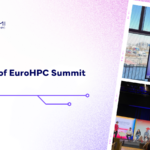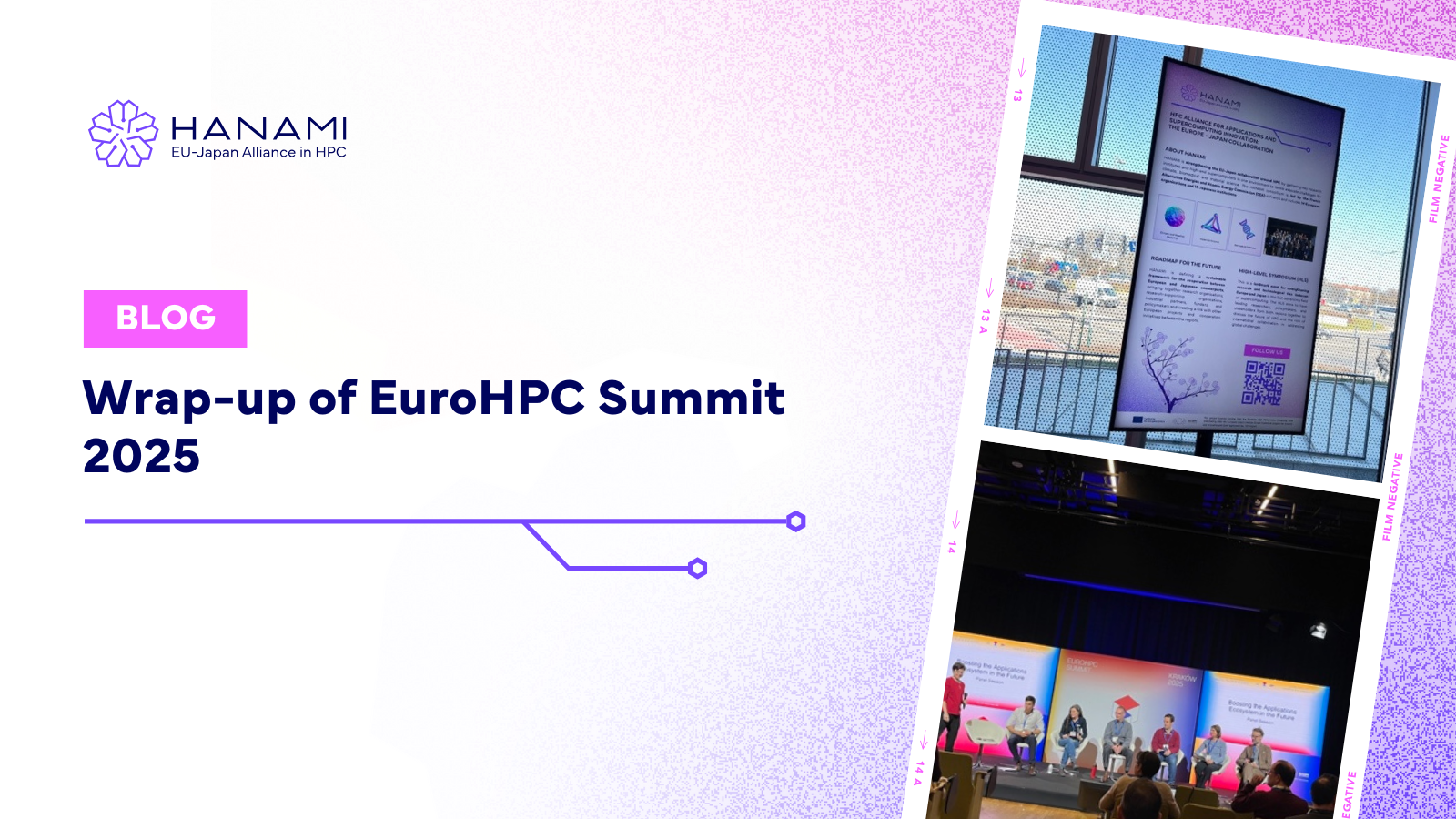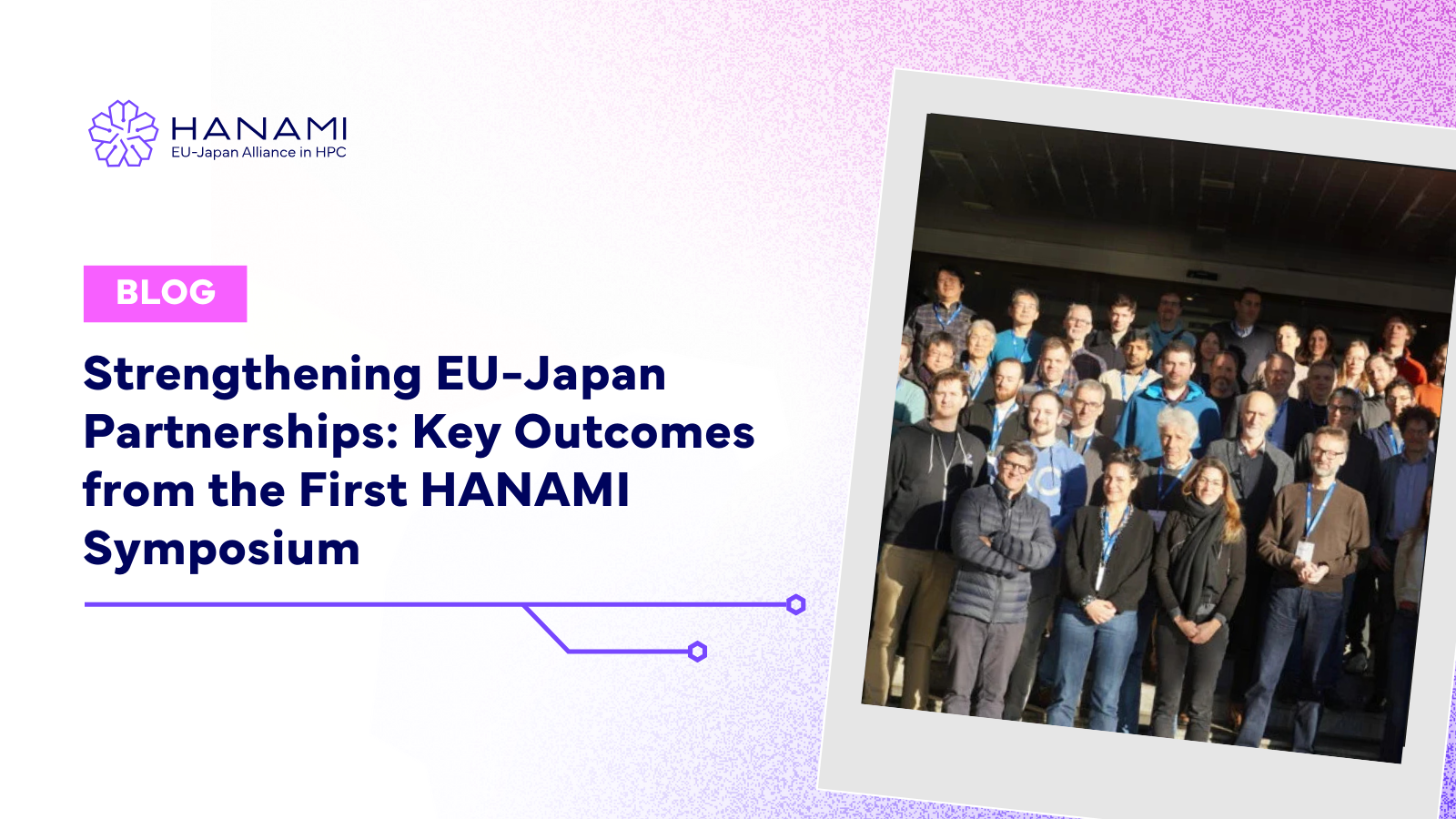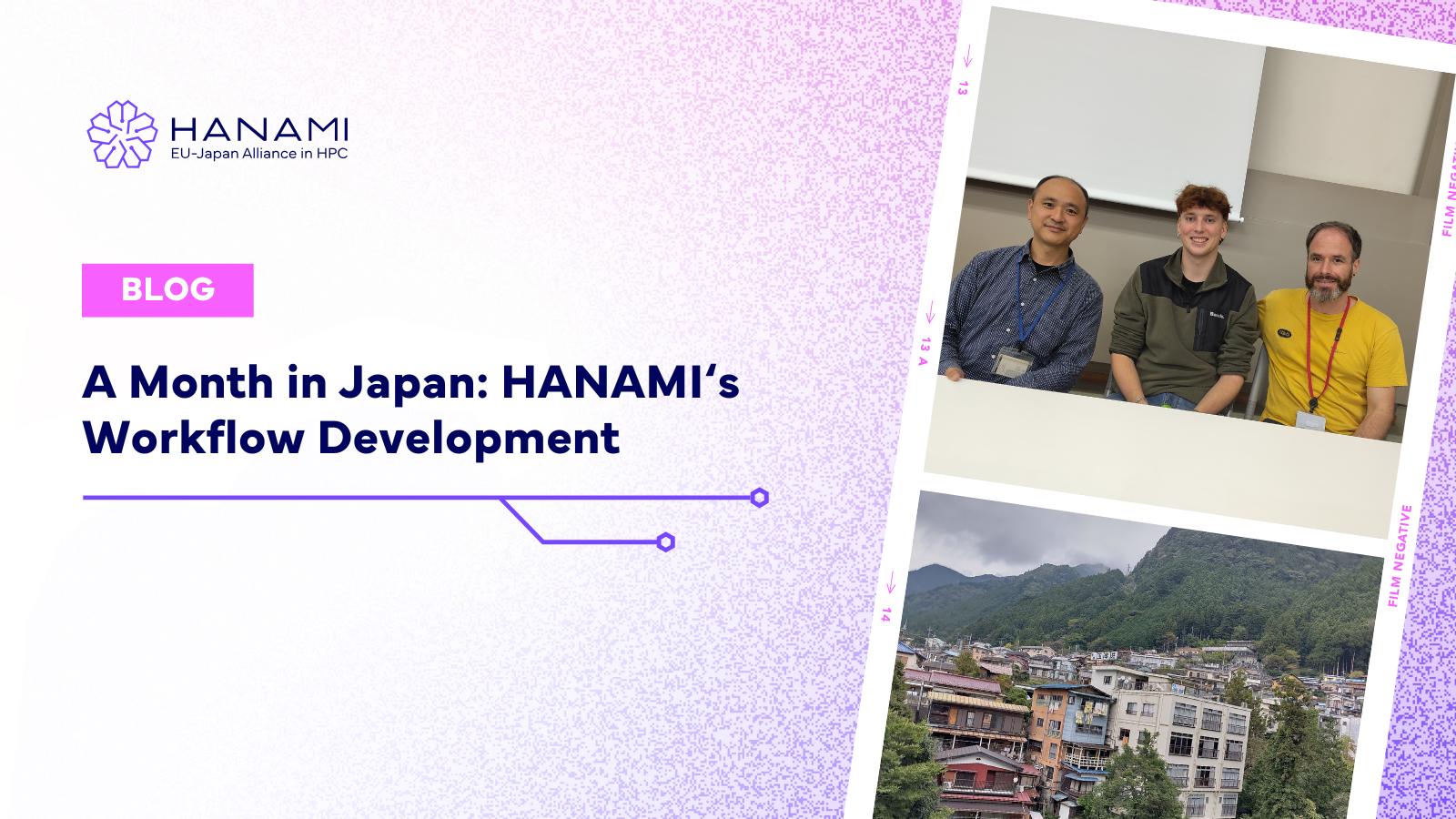Blog
20/03/2025
Yambo Benchmark campaign in the Fugaku Supercomputer
By N. Spallanzani, C. Borghesi, A. Ferretti and D. Varsano
The CNR Hanami team has successfully conducted the first benchmark campaign of the Yambo code on the Fugaku supercomputer.
Overview
This initiative was carried out as part of a trial access project aimed at installing, optimizing, and benchmarking the Yambo code on the Fugaku machine, in collaboration with Yokohama City University.
Yambo [1,2] is one of the flagship codes of Hanami WP6, dedicated to Materials Science. It is a first-principles computational tool designed to describe ground and excited state properties beyond Density Functional Theory (DFT), implementing advanced methodologies based on Many-Body Perturbation Theory. Over the years, Yambo has attracted a growing community of users and developers, contributing to more than a thousand of scientific publications worldwide. Already deployed on most of EuroHPC supercomputers, this campaign now extends Yambo’s capabilities to the Fugaku supercomputer as well.


Fig 1. Yambo
Technical Details
Yambo version 5.3.0 was compiled on Fugaku using the Yambo Spack recipe, provided via an external repository, leveraging the GCC compiler suite (version 12.2.0) and the Fujitsu-MPI library. The benchmarking focused on evaluating scalability while computing quasiparticle energies using the GW approximation, a state-of-the-art method for accurately determining electronic gaps and ionization energies in semiconductors.
Benchmark Systems
The benchmarks were conducted on two technologically relevant systems. The first system is a graphene/cobalt interface, consisting of a graphene sheet adsorbed on a cobalt slab with a vacuum layer equal in size to the cobalt slab. This system serves as a tunable magnetic substrate for spintronic applications [3]. To evaluate performance under different conditions, two Brillouin zone sampling sizes were tested.
The second system is a 2D halide perovskite, Cs₂PbI₄, a prototype of an entirely inorganic perovskite with a Ruddlesden-Popper structure. This material has gained significant attention for its enhanced stability and performance in photovoltaic and photoluminescent applications.

Fig 2. Left: Schematic cartoon of a flat Cobalt Graphene interface. Cobalt and Carbon atoms are indicated in blue and gray respectively. Right: Crystal structure of the 2D perovskite Cs₂PbI₄ (space group P4/mmm, 123). (a) Perspective view showing the layered structure of the case study material. (b) Side view highlighting the stacking of PbI₆ octahedra and Cs cations. (c) Top view illustrating the in-plane arrangement of PbI₄ layers. Pb, I, and Cs atoms are represented by grey, purple, and cyan spheres, respectively.
Benchmark Results
The test consists of a full run to calculate a few quasiparticle energies, which correspond to the energy levels required to add or remove an electron from the system. These quantities are experimentally accessible through photoelectron spectroscopy. The complete workflow includes the computation of dipoles, the independent-particle polarizability (X₀), the interacting polarizability (screened potential) obtained by solving a Dyson equation, the evaluation of the interaction self-energy, and finally, the solution of a linearized quasiparticle equation.
The results demonstrated excellent scalability, even at a large number of nodes. For the graphene/cobalt system with 7 k points, the efficiency reached 75% at 256 nodes. The same system with 61k points maintained 75% efficiency at 1,000 nodes. For the Cs₂PbI₄ benchmark, the efficiency was 87% at 128 nodes.

Fig 3. Scaling tests for a full GW calculation. Left Graphene on Cobalt is small, Center Graphene on Cobalt is la Right: Cs2PbI4 perovskite crystal. All runs are performed using 4 MPI tasks per node and 12 threads per task.
Future Improvements
While the benchmark results indicate strong scalability, further improvements in time-to-solution could be achieved by compiling with the Fujitsu compiler and implementing OpenMP dynamic scheduling. These optimizations will be the focus of the next benchmark campaign.
This benchmark campaign represents a significant step in extending Yambo’s reach to Fugaku, thereby enlarging its user base in the Japanese materials science community and enabling the exploitation of the resources on one of the world’s most powerful supercomputers.
[1] D. Sangalli et al., J. Phys.: Cond. Mat. 31, 325902 (2019)
[2] A. Marini et al., Comp. Phys. Comm. 180, 1392 (2009)
[3] G. Avvisati et al. Nano Lett., 18, 2268 (2018)





